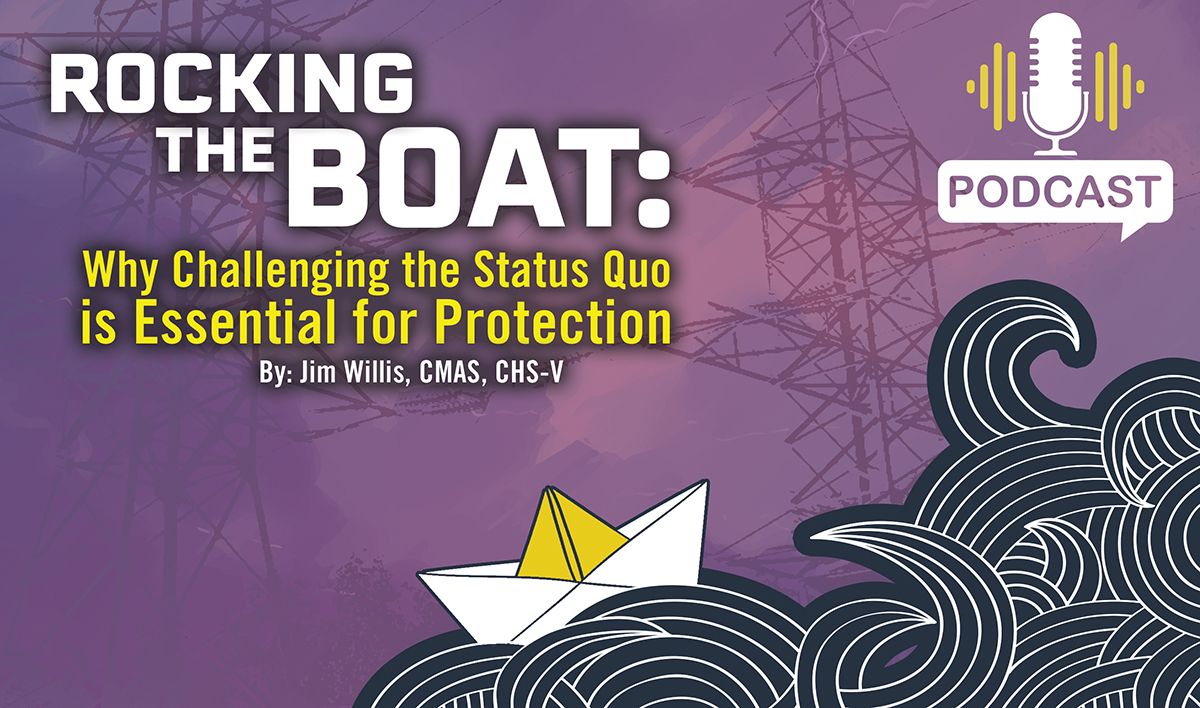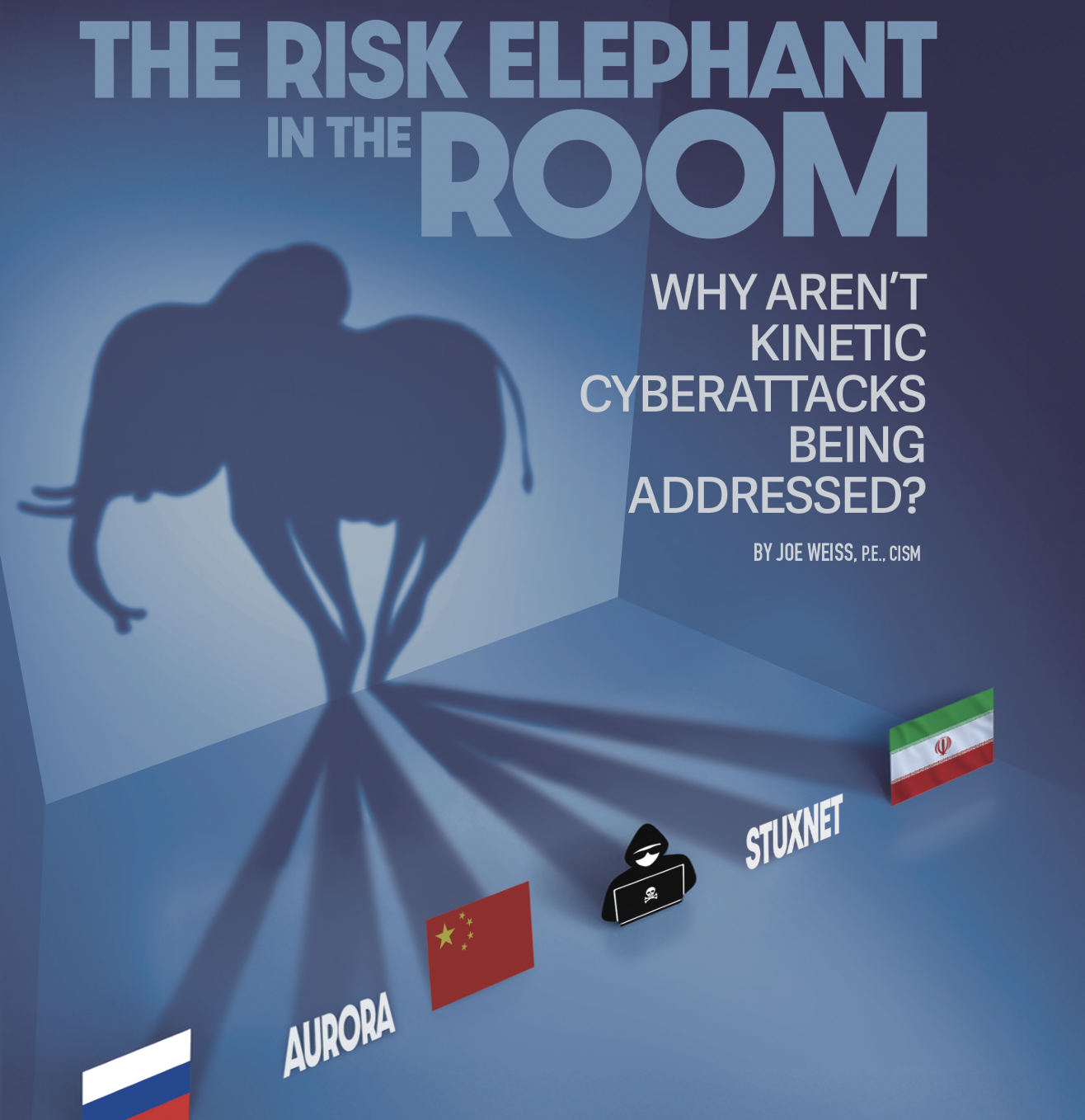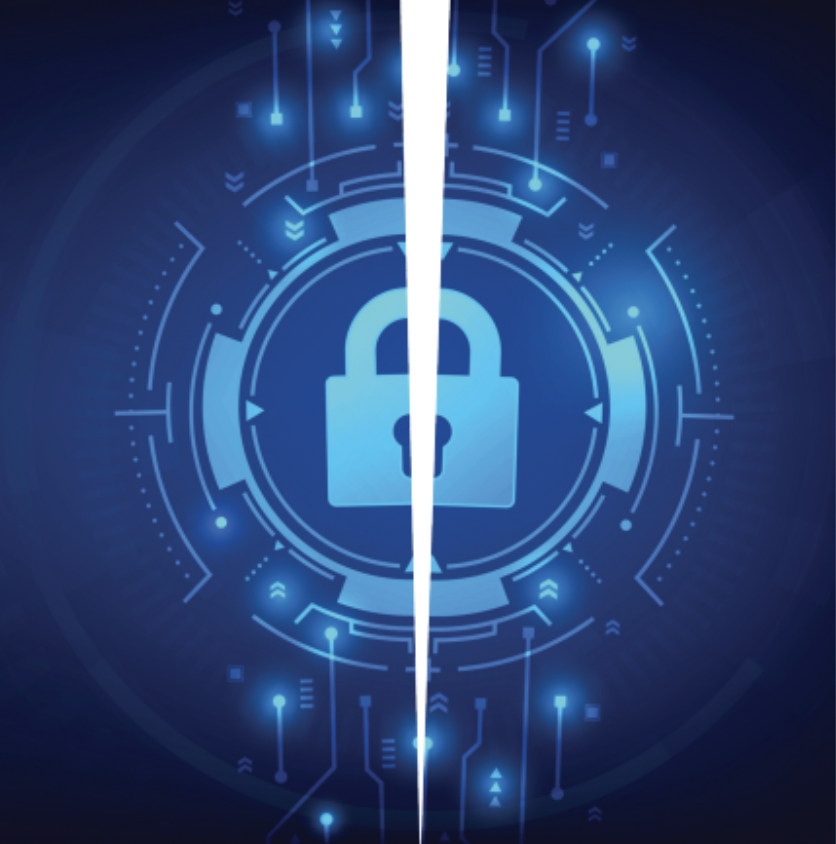
Utility Security Podcast – Deep Dive – Rocking the Boat – Why Utility Security Must Challenge the Status Quo

ISC East 2025 Preview: Spotlighting Critical Infrastructure, New Innovations, and Utility Security Insights

The Risk Elephant in the Room

Rocking the Boat: Why Challenging the Status Quo is Essential for Protection

Critical Infrastructure at a Crossroads: Cybersecurity Gaps in the Utility Sector

Addressing Utility Fragility in the Face of Escalating Climate Disasters
Leadership Lessons and Strategies I Learned From PBS
The Myth of Delegated Security

Physical-Cyber Convergence is the Future of Utility Security

Our Electricity Infrastructure: Built for a World That No Longer Exists
Utility Security Podcast – Deep Dive – Rocking the Boat – Why Utility Security Must Challenge the Status Quo
ISC East 2025 Preview: Spotlighting Critical Infrastructure, New Innovations, and Utility Security Insights
The Risk Elephant in the Room
Rocking the Boat: Why Challenging the Status Quo is Essential for Protection
Critical Infrastructure at a Crossroads: Cybersecurity Gaps in the Utility Sector
Critical Infrastructure at a Crossroads: Cybersecurity Gaps in the Utility Sector
Addressing Utility Fragility in the Face of Escalating Climate Disasters
Leadership Lessons and Strategies I Learned From PBS
The Myth of Delegated Security
Physical-Cyber Convergence is the Future of Utility Security
Opinion
Utility Security Podcast – Deep Dive – Rocking the Boat – Why Utility Security Must Challenge the Status Quo
ISC East 2025 Preview: Spotlighting Critical Infrastructure, New Innovations, and Utility Security Insights
The Risk Elephant in the Room
Rocking the Boat: Why Challenging the Status Quo is Essential for Protection
Video
Utility Security Podcast – Deep Dive – Rocking the Boat – Why Utility Security Must Challenge the Status Quo
Featured Topics
Utility Security Podcast – Deep Dive – Rocking the Boat – Why Utility Security Must Challenge the Status Quo
ISC East 2025 Preview: Spotlighting Critical Infrastructure, New Innovations, and Utility Security Insights
The Risk Elephant in the Room
Rocking the Boat: Why Challenging the Status Quo is Essential for Protection
Critical Infrastructure at a Crossroads: Cybersecurity Gaps in the Utility Sector
Addressing Utility Fragility in the Face of Escalating Climate Disasters
Utility Security Podcast – Deep Dive – Rocking the Boat – Why Utility Security Must Challenge the Status Quo
Key Takeaways
- Internal Obstacles are Formidable: The greatest challenges to enhancing utility security are often internal biases and resistance to change, specifically complacency (“it hasn’t happened yet”), misconceptions about security, and parochialism (departmental silos).
- Complacency is the “Silent Assassin”: A false sense of security, often built on a long period without a critical incident, leads to relaxed protocols and slashed budgets, leaving the organization vulnerable.
- Compliance Does Not Equal Security: Simply meeting minimum regulatory standards (like NERC-CIP) is not a comprehensive security strategy. A robust posture must be proactive, holistic, and continually evolving.
- Security is a Shared Responsibility: Effective security is not just an IT problem, a silver bullet technology, or the sole responsibility of law enforcement. It requires a collaborative, “all-hands-on-deck” approach that breaks down departmental silos and involves every employee.
- Challenging the Status Quo is Essential: To stay ahead of evolving threats, security professionals must be willing to “rock the boat” and push for change, even if it’s unpopular. This involves fostering cross-departmental collaboration, promoting an “all in the same boat” attitude, and leveraging industry partnerships.
3 Questions & Answers
1. Q: The article mentions “complacency” as vigilance’s silent assassin. Why is this specific mindset so dangerous in the utility industry? A: Complacency is dangerous because security threats are often intangible and can be easily overlooked. A utility might go decades without a major incident, which creates a false sense of security. This “it hasn’t happened yet” attitude leads to security budgets being cut, protocols becoming optional, and a static security posture that is completely unprepared for the modern, evolving threat landscape. 2. Q: What is one of the biggest misconceptions about security that the article debunks? A: A primary misconception is that compliance equals security. Many utilities believe that by meeting the minimum regulatory requirements, like NERC-CIP standards, they are secure. The article argues that this is just “ticking off boxes.” A truly robust security stance is proactive, inclusive, and protects against emerging threats on all fronts, going far beyond any minimum compliance standard. 3. Q: The article talks about “parochialism,” or departmental silos. How can an organization overcome this “it’s not my problem” mindset? A: To overcome parochialism, security must be redefined as a corporate-wide effort. The article suggests fostering cross-departmental collaboration through joint security task groups (with members from IT, OT, physical security, HR, etc.), promoting an “all in the same boat” attitude through comprehensive training so every employee understands their role, and leveraging industry partnerships like ISACs to build a strong collective defense. #UtilitySecurity #CriticalInfrastructure #CyberSecurity #SecurityCulture #RiskManagementISC East 2025 Preview: Spotlighting Critical Infrastructure, New Innovations, and Utility Security Insights
Being in New York City right before the holidays always brings its own excitement, but what’s truly important about bringing the industry together at the end of the year is the opportunity to connect in person, discover new technologies, and unveil fresh ideas.
This year, we are introducing several new areas on the show floor designed to do more than just keep pace with innovation. These dynamic experiences will allow professionals to see, touch, and truly understand the impact of these technologies firsthand. Our goal is to empower the security community to anticipate future needs and collectively shape the direction of our industry. This year’s show will deliver exactly that.
Critical Infrastructure remains a central theme, but we have evolved our approach. The former Critical Infrastructure area on the show floor will be reimagined as the Trends Pavilion, featuring exhibitors in critical infrastructure, wire and cable, and advanced sensors. To bring the pavilion to life, Lee Odess, CEO of Access Control Executive Brief, will host live interviews directly from the show floor.
Additionally, Thursday, November 20, Amanda Mason, VP of Intelligence at Related Companies, will deliver the Day 2 keynote, presented by the SIA Women in Security Forum. This session, “Protecting New York’s Critical Infrastructure: A Hudson Yards Perspective,” will provide an exclusive look into the complexities of securing the largest private real estate development in U.S. history. Mason will explore the convergence of cyber, physical, and geopolitical risks, sharing strategies for integrating intelligence into operations to safeguard critical assets.
Our can’t miss collection of SIA Education@ISC sessions and panel discussions will also spotlight Critical Infrastructure, providing our ISC East audience with actionable insights for one of the industry’s most pressing challenges.
For professionals in the utility sector, I highly recommend the session: “Effective Security Project Planning in the Utilities and Energy Sector: Do’s and Don’ts.“
This session is specifically designed to equip participants with the essential skills and best practices for navigating the complexities of security project planning in this critical industry. The panel features experts from across the security spectrum—including a manufacturer, an end user, a system integrator, and a consultant—all with deep experience in the energy and utility sectors. The discussion will delve into strategic and tactical planning techniques that drive project success, ensuring that each initiative delivers value and aligns with organizational goals.
We’re introducing several exciting new areas on the expo floor this year to showcase where the security industry is headed.
Beyond our Trends Pavilion, the new Startup Area will spotlight emerging brands, giving attendees a front-row seat to discover the next wave of security innovation. Another major addition is the debut of the Smart Building Experience Center, an immersive activation that guides visitors through a “mini” smart building environment. From real-world access control elements to a security operations center, this interactive journey connects the dots between devices, data, and decisions to show how integrated systems work together in practice.
Attendees will also have access to complimentary education sessions at The Bridge and the Career Zone, offering even more opportunities to connect, learn, and network throughout the event.
The latest event details, up-to-date information on education sessions, and all registration options for ISC East can be found on our website.
The Risk Elephant in the Room
Rocking the Boat: Why Challenging the Status Quo is Essential for Protection
Critical Infrastructure at a Crossroads: Cybersecurity Gaps in the Utility Sector
- Nation-state hackers testing how quickly they can turn off your heat in January.
- Ransomware syndicates that don’t care if their victim is a hospital, power grid or wastewater plant – money is money.
- Supply chain risks where one vulnerable vendor becomes the hacker’s golden ticket. Remember SolarWinds? That wasn’t just an information technology (IT) problem.
- AI-powered threats that make phishing more convincing, intrusions more automated and disinformation campaigns practically indistinguishable from reality.
- Visibility across IT and OT. Many utilities don’t have a single pane of glass to see attacks spanning both networks.
- Incident response. Tabletops and crisis drills are often underfunded or nonexistent.
- Zero Trust adoption. In most utilities, this is still more buzzword than reality.
- Threat intelligence sharing. Utilities often operate in silos, reluctant to share information even though attackers are collaborating just fine.
- Technology. If implemented properly, AI-driven threat detection; network segmentation and integrated endpoint detection and response; network detection and response; and extended detection and response platforms are game changers.
- Governance, including integrated security operations centers and network operations centers, risk-based frameworks, and accountability that goes all the way to the boardroom.
- The workforce. Public-private partnerships, upskilling programs and scenario-based training can start to close the talent gap.
- Resiliency. Redundancy, crisis communication planning and cyber-physical response exercises make the difference between a bad day and a catastrophic one.